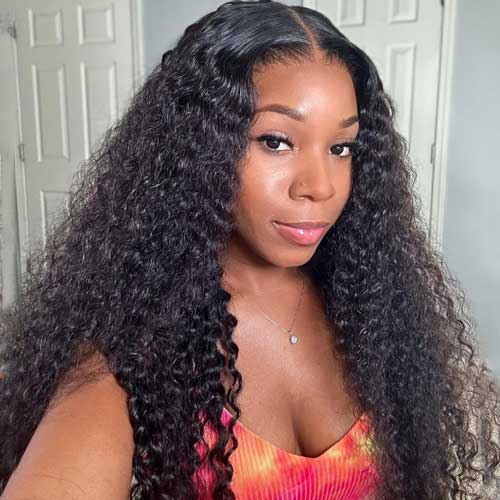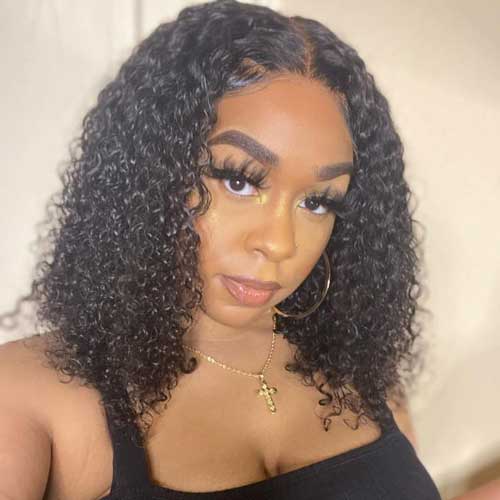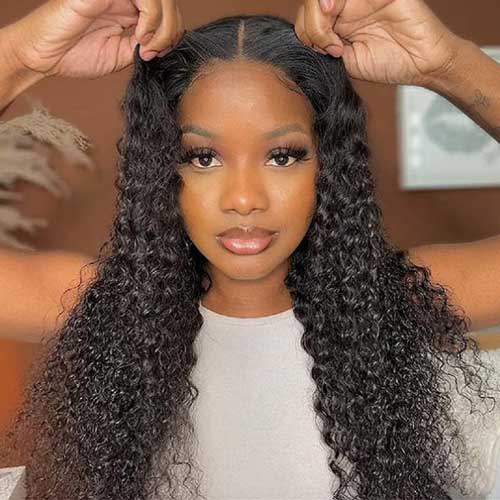Wigs are a popular option for people who want to change their hairstyle, cover hair loss, or experiment with different looks. However, not all wigs are created equal. The quality of a wig can vary depending on the material, construction, style, and maintenance. In this article, we will explore the factors that affect the cost of a good quality wig and provide some tips on how to choose the best one for your needs and budget.

The cost range of a good quality wig.
If you are looking for a good quality wig, you may wonder how much it will cost you. The answer is not simple, as there are many factors that affect the price of a wig, such as the material, the style, the size, the brand, and the customization. However, in general, you can expect to pay between $200 and $1000 for a good quality wig.
Synthetic wigs are usually cheaper than human hair wigs, as they are easier to produce and maintain. Synthetic wigs can range from $50 to $500, depending on the quality and the realism of the fibers. Human hair wigs are more expensive, as they are made from real human hair that is carefully collected, processed, and styled. Human hair wigs can range from $200 to $2000, depending on the origin, texture, color, and length of the hair.

What’s the difference between a cheap wig and a pricy one?
The main differences between a cheap wig and a pricey one are typically in the quality of materials, craftsmanship, and overall appearance.
Cheap wigs.
Cheap wigs are often made with lower-quality synthetic fibers or less expensive human hair. They may not look as natural or realistic as pricier options. The construction of cheap wigs may be less durable, with thinner wefts or less attention to detail in the stitching.
Pricier wigs.
On the other hand, pricier wigs are usually made with higher-quality materials, such as premium synthetic fibers or higher-grade human hair. These wigs tend to have better texture, shine, and movement, resembling natural hair more closely. They are often handcrafted with meticulous attention to detail, resulting in a more realistic and flattering appearance.
Additionally, pricier wigs may offer more customization options, such as adjustable caps for a better fit, pre-styled designs, and more natural-looking colors and highlights. They may also have advanced features like lace fronts or monofilament caps, which provide a more realistic hairline and greater versatility in styling.
Ultimately, while cheap wigs can be a budget-friendly option, pricier wigs often offer superior quality, durability, and a more natural look, making them a preferred choice for those seeking a realistic and long-lasting wig.

What factors influence the cost of a decent wig?
1. The material of the wig.
One of the most important factors that determine the cost of a wig is the material it is made of. There are two main types of wig materials: synthetic and human hair. Synthetic wigs are made from artificial fibers that mimic the appearance and texture of natural hair. Human hair wigs are made from real human hair that is collected from donors or purchased from hair vendors.
Synthetic wigs.
Synthetic wigs are generally cheaper than human hair wigs, as they are easier to produce and require less processing. However, they also have some drawbacks. Synthetic wigs tend to have a shorter lifespan than human hair wigs, as they can get damaged by heat, friction, or chemicals. They also have less styling versatility, as they cannot be dyed, bleached, or curled with hot tools. Synthetic wigs usually have a fixed style and shape that cannot be changed much.
Human hair wigs.Human hair wigs are more expensive than synthetic wigs, as they are more difficult to source and process. However, they also have many advantages. Human hair wigs have a longer lifespan than synthetic wigs, as they can withstand heat, washing, and styling. They also have more styling versatility, as they can be dyed, bleached, curled, straightened, or cut to suit your preferences. Human hair wigs also have a more natural look and feel than synthetic wigs, as they have more variation in color, texture, and density.
Human hair comes in two varieties: non-Remy and Remy.
Since non-Remy hair is gathered from several donors, the cuticles are frequently out of place. To give the hair a smooth surface and prevent tangling, the cuticles are removed. The hair loses strength and quality as a result of this.
Remy hair originates from a single donor as opposed to several. Because the cuticles are not peeled and point in the same way, the user experiences less tangling.
It is possible to bleach, color, or texturize human hair. Due to their inferior relative quality, non-Remy human hair wigs are less expensive than Remy human hair wigs.
Virgin human hair wigs.
Virgin hair, which comes from a single donor, is entirely natural hair. Never has it undergone any kind of processing, including bleaching, stripping, or dyeing. It is resilient, sturdy, and lasts for years. It is not prone to tangling. For a real virgin hair wig, budget between hundreds and thousands of dollars.
2. The construction of the wig.
Another factor that affects the cost of a wig is the construction of the wig cap. The wig cap is the base of the wig that holds the hair in place and attaches to your head. There are different types of wig caps that vary in complexity and comfort. The main types of wig caps are:
– Wefted cap:
This is the most common and affordable type of wig cap. It consists of rows of hair that are sewn onto strips of fabric or elastic. The wefts create spaces between them that allow air circulation and flexibility. However, they also create bulkiness and limit the movement of the hair.
– Monofilament cap:
This is a more advanced and expensive type of wig cap. It consists of a thin mesh material that covers the entire or part of the cap. The hair is individually knotted onto the mesh, creating a natural appearance and movement. The mesh also creates a realistic scalp effect and allows you to part the hair in any direction.
– Lace cap:
This is the most realistic and costly type of wig cap. It consists of a fine lace material that covers the entire or part of the cap. The hair is individually knotted onto the lace, creating a seamless transition between the wig and your skin. The lace also creates a natural hairline and allows you to style the hair away from your face.
3. The style of the wig.
The style of the wig also influences its price. The style refers to the length, shape, texture, and color of the wig. Generally speaking, longer wigs are more expensive than shorter wigs, as they require more hair and labor to make. Curly or wavy wigs are also more expensive than straight wigs, as they require more processing and maintenance to achieve their shape. Additionally, colored or highlighted wigs are more expensive than natural or single-toned wigs, as they require more dyeing and bleaching to achieve their hue.
4. The maintenance of the wig.
The maintenance of the wig also affects its cost in the long run. The maintenance refers to how often you need to wash, condition, style, and store your wig to keep it in good condition. Generally speaking, synthetic wigs require less maintenance than human hair wigs, as they do not absorb oil or dirt from your scalp and retain their shape after washing. However, synthetic wigs also need to be replaced more frequently than human hair wigs, as they lose their quality over time.
Human hair wigs require more maintenance than synthetic wigs, as they need to be washed regularly with gentle shampoo and conditioner to prevent tangling and dryness. They also need to be styled with heat tools or products to achieve your desired look. However, human hair wigs also last longer than synthetic wigs if properly cared for.
5. The size of the wig.
The size of the wig is another factor that influences its cost. Wigs come in different sizes, such as petite, average, or large. The size of the wig depends on the circumference of your head and your personal preference. The larger the wig size, the more material and hair it will need, and therefore the more expensive it will be.
6. The brand.
The brand of the wig is another factor that determines its cost. There are many brands of wigs in the market. Each brand has its own reputation and quality standards. Some brands are more popular and trusted than others and may charge higher prices for their products.
7. Customization.
The customization of the wig is another factor that affects its cost. Customization refers to any alterations or modifications that you make to your wig to suit your personal taste and needs. For example, you may want to cut, color, perm, or style your wig differently than how it came from the manufacturer. Customization can increase or decrease the cost of your wig depending on what you do to it. For example, cutting your wig may reduce its cost as you use less material and hair. However, coloring or perming your wig may increase its cost as you use more chemicals and damage the hair.
Anyhow.
The cost range of a good quality wig can vary widely depending on many factors such as the material, the style, the maintenance, the size, the brand, and the customization. A good quality wig can be an investment that enhances your appearance and confidence, but it also requires careful research and maintenance. Therefore, before you buy a wig, you should consider your budget, your preferences, and your lifestyle to find the best option for you.
